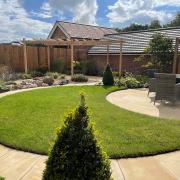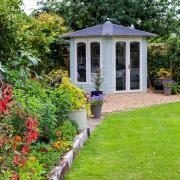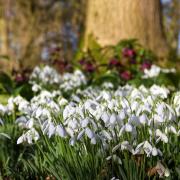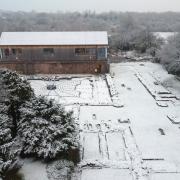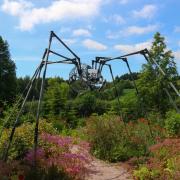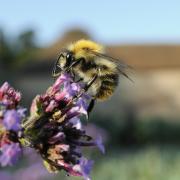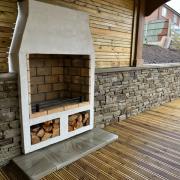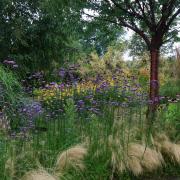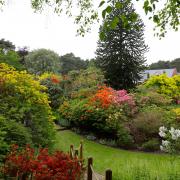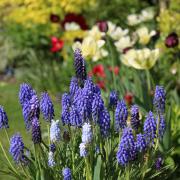Eaton Golf Club in Waverton is leading the way in environmental course design
Words and photography by Keith Plant
Click the picture on the right to start playing the audio
This recording is courtesy of Sandbach and District Talking Newspaper service
From a state-of-the-art digital studio in Sandbach, about 100 visually impaired listeners are served every week, but Sandbach TN is actively trying to increase the number of its listeners and also to reach others who perhaps suffer a disability which makes reading a strain.
For more information please look at the charity's website, www.talkingnews.org.uk, or call Pam on 01606 833408
Nestling into the Cheshire countryside in Waverton, just south of Chester is Eaton Golf Club. Bordering on the Shropshire Union Canal, it truly is part of the Cheshire landscape. There are no banks of rhododendrons here, no manicured lakes, no artificial streams. Some golf courses look like they could be found anywhere in the world: Eaton has Cheshire running through it like lettering in rock.When the course was designed in the early 1990s it was built upon agricultural land. From day one the focus was upon sustainability and retaining as many of the existing habitats as possible. The trees were preserved, the hedges extended...so that it quickly became as much a wildlife haven as a golf course.Ever since its design the needs of golfers and the needs of the countryside have lived in harmony. They even have an environmental working group, led by keen conservationist Rupert Thorp who keeps as close an eye on the wildlife as he does on his handicap. He’s made sure that the ponds are wildlife friendly rather than pretty water features and hedges are nesting grounds rather than out of bounds markers.The rewards are obvious: whether it’s an environment award from English Nature, a commendation from the Royal and Ancient who have promoted it nationally as an example to others, or merely the sight of hares playing across the fairway. It’s clear that these golfers can enjoy their sport amid the birdsong of rolling Cheshire countryside.It all began almost 20 years ago when more than a million pounds was raised by members to finance a new course designed by internationally renowned golf course architect Donald Steel. Steel is the only architect to advise on the development of all Britain’s open golf venues and at Eaton he was keen to design the course around the existing trees and undulations - many of the oak trees on the course are more than 100 years old. Since those early days 4,000 more trees have been planted in copses and hedgerows have been restored and developed.It shows that a golf course can be lovingly cared for without being over-tended. 'There are soft edges to everything,’ says Rupert, showing how the ponds merge into the fairways and the rough is tall grasses that can be recycled by local farmers after harvesting. The club have even worked with the local Broxton barn owl group who have installed and maintain nesting boxes among the old oaks, leading to a successful breeding programme.But the club hasn’t ignored the present in conserving the past. The heavy clay soil means ponds can survive on the highest points of the course but a futuristic draining system means golf is possible here even in the wettest of weather. They’re currently extending the length of holes to maintain the challenge for the increasing range of modern clubs.The quality of the golfing challenge here has been widely recognised: the Cheshire match play competition was held here in 2009 and the Cheshire versus Durham county match is scheduled for early July.The challenge of maintaining the harmony between golf and the environment has clearly helped to create a very friendly club with up to date attitudes. Lifetime golfer Ron Everstead says: ‘It’s as warm and welcoming club as I’ve ever experienced.’They love encouraging youngsters to play and are proud of two of their former juniors who are currently competing successfully on the professional circuit - Dale Marmian and James Westwood.Most importantly, this club is owned by its members so they escape the pressures of making a profit for outside investors - thus giving them the freedom to choose to improve the countryside alongside their handicaps.



